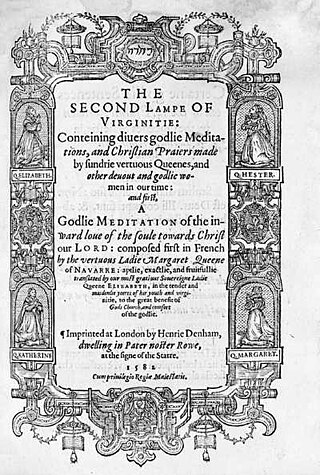Related Research Articles

A Dictionary of Modern English Usage (1926), by Henry Watson Fowler (1858–1933), is a style guide to British English usage, pronunciation, and writing. Covering topics such as plurals and literary technique, distinctions among like words, and the use of foreign terms, the dictionary became the standard for other style guides to writing in English. Hence, the 1926 first edition remains in print, along with the 1965 second edition, edited by Ernest Gowers, which was reprinted in 1983 and 1987. The 1996 third edition was re-titled as The New Fowler's Modern English Usage, and revised in 2004, was mostly rewritten by Robert W. Burchfield, as a usage dictionary that incorporated corpus linguistics data; and the 2015 fourth edition, revised and re-titled Fowler's Dictionary of Modern English Usage, was edited by Jeremy Butterfield, as a usage dictionary. Informally, readers refer to the style guide and dictionary as Fowler's Modern English Usage, Fowler, and Fowler's.

Xmas is a common abbreviation of the word Christmas. It is sometimes pronounced, but Xmas, and variants such as Xtemass, originated as handwriting abbreviations for the typical pronunciation. The 'X' comes from the Greek letter Chi, which is the first letter of the Greek word Christós, which became Christ in English. The suffix -mas is from the Latin-derived Old English word for Mass.

The close front unrounded vowel, or high front unrounded vowel, is a type of vowel sound that occurs in most spoken languages, represented in the International Phonetic Alphabet by the symbol i. It is similar to the vowel sound in the English word meet—and often called long-e in American English. Although in English this sound has additional length and is not normally pronounced as a pure vowel, some dialects have been reported to pronounce the phoneme as a pure sound. A pure sound is also heard in many other languages, such as French, in words like chic.

The Dictionary of American Regional English (DARE) is a record of American English as spoken in the United States, from its beginnings to the present. It differs from other dictionaries in that it does not document the standard language used throughout the country. Instead, it contains regional and folk speech, those words, phrases, and pronunciations that vary from one part of the country to another, or that are learned from family and friends rather than from teachers and books. For DARE, a "region" may be as small as a city or part of a city, or as large as most of the country. Humanities magazine has described it as "a bold synthesis of linguistic atlas and historical dictionary", and William Safire called it "the most exciting new linguistic project in the twentieth century".
Philip Dennis Hobsbaum was a British teacher, poet and critic.

May Miller was an American poet, playwright and educator. Miller, who was African-American, became known as the most widely published female playwright of the Harlem Renaissance and had seven volumes of poetry published during her career as a writer.

Lorna Sage was an English academic, literary critic and author, remembered especially for contributing to consideration of women's writing and for a memoir of her early life, Bad Blood (2000). She taught English literature at the University of East Anglia.

Rajiva Wijesinha, MA, DPhil is a Sri Lankan writer in English, distinguished for his political analysis as well as creative and critical work. An academic by profession for much of his working career, he was most recently Senior Professor of Languages at the University of Sabaragamuwa, Sri Lanka.

"The Rime of King William" is an Old English poem that tells the death of William the Conqueror. The Rime was a part of the only entry for the year of 1087 in the "Peterborough Chronicle/Laud Manuscript." In this entry there is a thorough history and account of the life of King William. The entry in its entirety is regarded "as containing the best contemporary estimate of William's achievements and character as seen by a reasonably objective Englishman". As a resource, earlier writers drew from this in a more literal sense, while later historians referred to it more liberally. The text in its original language can be found in The Peterborough Chronicle 1070–1154, edited by Cecily Clark. A modern translation can be found in the Anglo-Saxon Chronicles translated by G.N. Garmonsway. Seth Lerer has published a more recent modern translation of "The Rime of King William" in his article, "Old English and Its Afterlife," in The Cambridge History of Medieval English Literature.
A hexalogy is a compound literary or narrative work that is made up of six distinct works. The word apparently first appeared in English as a borrowing from German, in discussions of August Bungert's Wagnerian opera cycle entitled Homerische Welt based on the Iliad and the Odyssey. Both pentalogie and hexalogie were used by Théophile Gautier in 1859. In 1923 the word was applied by an American reviewer to Johannes V. Jensen's The Long Journey.

The Monument of Matrones (1582) was the first published anthology of English women's writing. A compilation of prayers and meditations written largely by and for women published in London, its full title was The Monument of Matrones: Conteining Seven Severall Lamps of Virginitie, or Distinct Treatises; Whereof the First Five Concerne Praier and Meditation: the Other Two Last, Precepts and Examples. The Monument's seven "Lampes" or books make up 1500 quarto pages.
Walter Sholto Douglas (1790–1830), born under the name Mary Diana Dods, was a Scottish writer of books, stories and other works. Despite being assigned a female identity, Douglas lived as a man in his private, public, and work life. Most of his works appeared under the pseudonym David Lyndsay. His name may have been partly inspired by his grandfather's name, Sholto Douglas, 15th Earl of Morton. He was a close friend and confidant of Mary Shelley, and the husband of Isabella Robinson. In 1980, scholar Betty T. Bennett sensationally outed Douglas, connecting his deadname with his writing pseudonym.

Dora Birtles, was an Australian novelist, short-story writer, poet and travel writer.
Anne Fuller was an Irish novelist in the Gothic genre. She was one of the earliest women writers of Gothic fiction.
Anne Wheathill was an English poet known for A Handfull of Holesome Hearbs, a collection of forty-nine prayers. A Handfull of Holesome Hearbs is the first nonaristocratic English gentlewoman's book of prayers. Characteristic to the period, the Reformist prayers' topics include admission of transgressions, entreaty for forgiveness, the glory of God, and connection to the divine. The collection was published by Henry Denham. The only known original copy of A Handfull of Holesome Hearbs is held by the Folger Shakespeare Library.
Mary O'Brien, was an Irish poet and playwright who wrote during and about the Regency period.
Martha Moulsworth, born Martha Dorsett, was an English writer who spent much of her life in Hoddesdon, Hertfordshire. Her only known literary work, Memorandum of Martha Moulsworth, Widow (1632), an autobiographical poem, is one of the earliest known autobiographies in English.
Nicole Ward Jouve is a French writer and literary critic, who writes in both French and English. For most of her career Ward Jouve lived and worked in England. She is Emeritus Professor of Literature at the University of York.
References
- ↑ British Library: Integrated Catalogue entry
- ↑ Cambridge University Press: About The Book
- ↑ "The apex of a vast act of reclamation". The Independent. 26 November 1999.